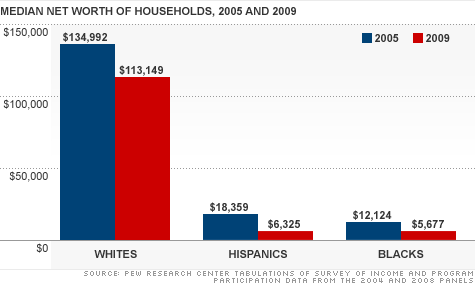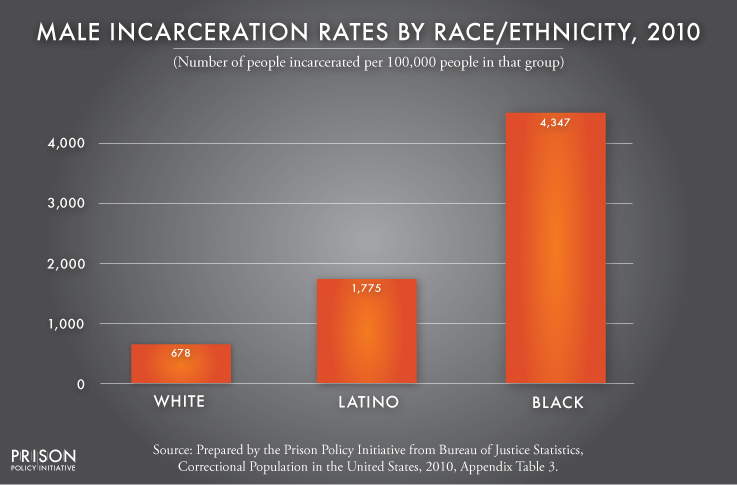The history of race and racism in America is beautifully summarized in the PBS miniseries Race: The Power of an Illusion. I highly recommend it. I watched the series with the Banneker Institute this summer. In fact, on the day that we watched the first episode, we were visited by one of the stars of the series, Dr. Evelynn Hammonds, a Professor of the History of Science and a Professor of African and African-American Studies at Harvard.
 |
| Prof. Hammonds |
I encourage everyone to rent the three-part series from Vimeo (URL) for five bucks and watch it with friends and family. I know we live in an era in which online stuff is often free. But trust me, this is $5 well spent. The series covers about 20 books worth of material in an extremely well-produced, entertaining , highly educational documentary. You can use it as a basis for having a grown-up discussions about race with friends and family (hopefully!).
Okay, to the topic in the title of this post. As I watched Episode 2 for the second time, one passage stood out to me (full transcript here):
AUDREY SMEDLEY, ANTHROPOLOGIST: Slavery became identified with Africans--blackness and slavery went together. That gave white Americans the idea that Africans were a different kind of people.
MIA BAY, HISTORIAN: There's a racial divide emerging that people begin to, um, see as natural, and that's part of where the idea of race comes from. It's just in the tendency for people to see existing power relationships as having some sort of natural quality to them.
NARRATOR: By the time Jefferson sat down to write Notes on the State of Virginia in 1781, a plantation economy dependent on slavery was deeply entrenched. Slavery had become so widespread that to many whites it seemed the natural state for black people. But when Jefferson turned his attention to Indians in Notes, what appeared natural about them was their status as free people, brave warriors protecting their lands. This led Jefferson to suspect that Indians were not much different from Europeans.
This historical summary illustrates what I think of as the circular "dance" of racism. The steps of this circular reasoning are relatively simple and predictable, if not completely infuriating:
- People with power (namely white people, but men in the case of sexism; cis-het people and heterosexism; able-bodied people and ableism) leverage their power to create the social conditions for and limit the options of another group (non-white people; women; LGBTQI people; disabled people).
- These social conditions result in non-optimal outcomes for the "inferior" group, such as poverty and underrepresentation.
- These conditions are then observed by subsequent (and current) generations of people in power, and the conditions are attributed to the intrinsic inferior nature of the oppressed group, and are used as justification for their inferior status.
Racism (and other *isms) are so powerful because they are self-replicating, self-realizing and self-supporting. *isms are used to create suboptimal conditions that are then used to a posteriori justify those conditions and then perpetuate them into the future. This process is also known as "naturalization" (Bonilla-Silva 2010). This is why "let the past be in the past" is such a common refrain for white people who are ignorant about the nature of race and racism in our country. Examining the past immediately identifies white people and their ancestors as the culprits for the current conditions that they use to justify the inferiority of other people!
How does the circular dance play out in modern times? Well, let's start with the dance vis-à-vis Blackness in historical times and follow the bright line forward to the present. I'll focus on Blackness for simplicity, but also because anti-blackness is the fulcrum of white supremacy:
- As per the quote above: First, force Black people into slavery, notice that only Black people are slaves. Note that full humans wouldn’t be in such a wretched state, so slavery must be a feature of Blackness and evidence of the inferiority of Black people.
- After emancipation, white people lost their access to cheap (read: free) labor. They found a loophole in the 13th amendment, and started the institution of convict leasing. Black people in prison were sold into bondage (cf Blackmon's Slavery By Another Name as well as the PBS documentary). When they ran out of Black convicts, they went out and arrested more on trumped up charges such as loitering, unemployment, spitting, cursing, etc. In 20 years the Black prison population increased from 4% to 70%. By 1898, convict leasing made up 73% of Southern state revenues (Perkinson 2010). Why isn't this taught in our schools? Because white supremacy!
 |
| Black men laboring in post-emancipation US under de facto slavery, providing white America with profit and wealth, as well as a handy stereotype of Blacks as a unique criminal class in our country, what Ta-Nehisi Coates calls America's Premier Outlaw Class (Image credit: Wiki Commons). |
- Note that Black people were, and still are, disproportionately imprisoned, so criminality must be a feature of Blackness. As it was then, so it is today.
- Note that Black people are often arrested for theft, vagrancy and loitering. Laziness and theft are features of Blackness.
- Black people were denied high-paying jobs and most worked as sharecroppers in a permanent state of indebtedness to white landowners. During the Great Depression aid was limited to people in nonagricultural jobs, pushing Black people further into slavery. FHA and GI Bill loans were given disproportionately to white people, with Black people locked out of white neighborhoods by housing covenants and Black neighborhoods redlined. Blockbusting, white flight and contract leasing further denied Black people the ability to own homes and accumulate wealth. As a result, there exists today an 18:1 wealth gap between Blacks and whites.
- Note that Black people are disproportionately poor. Poverty must be a feature of Blackness.
- Poverty limits access to higher education, since college is expensive. Further, it is difficult to earn good grades when a student has to work one or several jobs in addition to maintaining their studies; it is difficult to adjust to college life without family members to give advice and guidance; it is difficult to find study partners and build a community, particularly in the sciences, since there are so few other people of color present; stereotype threat depresses student performance, particularly on tests. Note that there are very few Black students with high grades in STEM fields. A disinclination to, and inferior performance in science must be a feature of Blackness.
And the cycle goes round and round, resulting in this:
White people have historically held and continue to hold the power to shape the outcomes of other racial groups in our country, and very frequently do so to the detriment of people of color. Having relegated POC to lesser positions, this lower status is assigned as a feature of that group and used as an explanation for that state of being. Pretty slick, eh?
What other forms of circular logic have you noticed? Let's discuss in the comments!
And this:
And even this:
White people have historically held and continue to hold the power to shape the outcomes of other racial groups in our country, and very frequently do so to the detriment of people of color. Having relegated POC to lesser positions, this lower status is assigned as a feature of that group and used as an explanation for that state of being. Pretty slick, eh?
What other forms of circular logic have you noticed? Let's discuss in the comments!



Comments
White flight and the segregation of US cities today? How did that happen...
https://hild2b.files.wordpress.com/2013/02/miscegenation1864.jpg
https://makinghistoryatmacquarie.files.wordpress.com/2011/11/miscegenation.jpg
"Welfare queens" and "young bucks" using food stamps to buy T-bones steaks? They were just innocent mistakes...
https://upload.wikimedia.org/wikipedia/commons/thumb/3/33/Freedman's_bureau.jpg/1280px-Freedman's_bureau.jpg
http://krugman.blogs.nytimes.com/2007/11/10/innocent-mistakes/?_r=0
You cannot call this racism though. No way, no how.